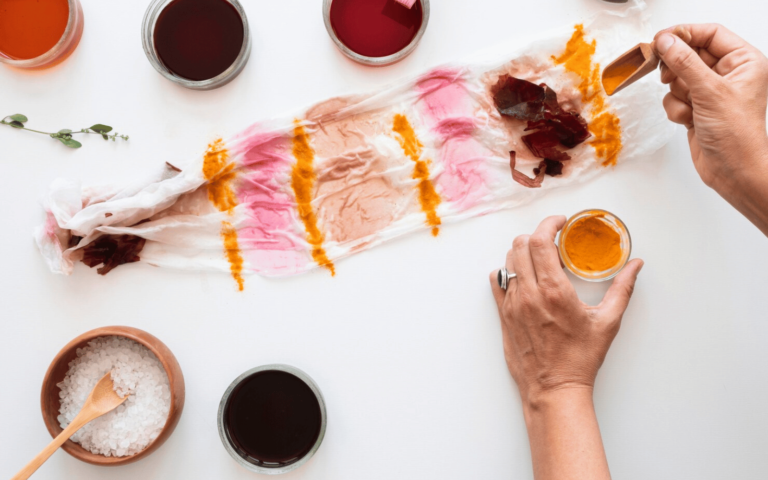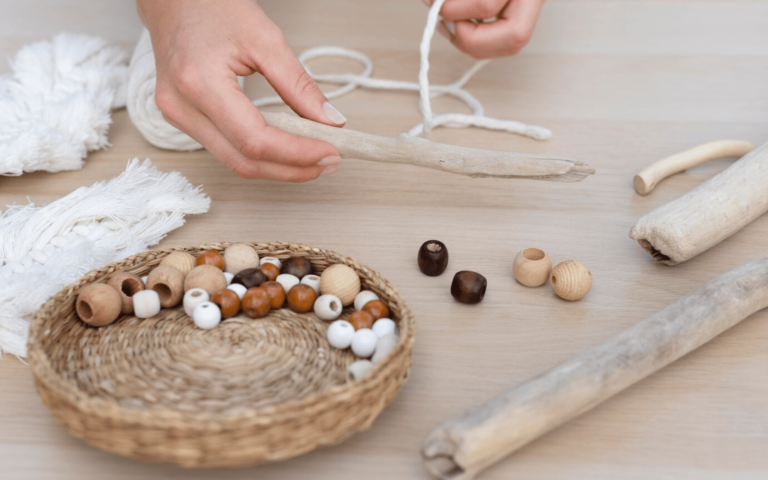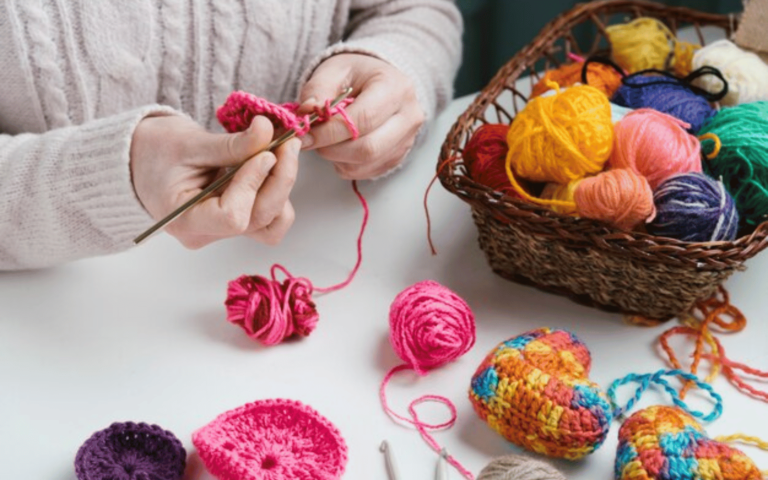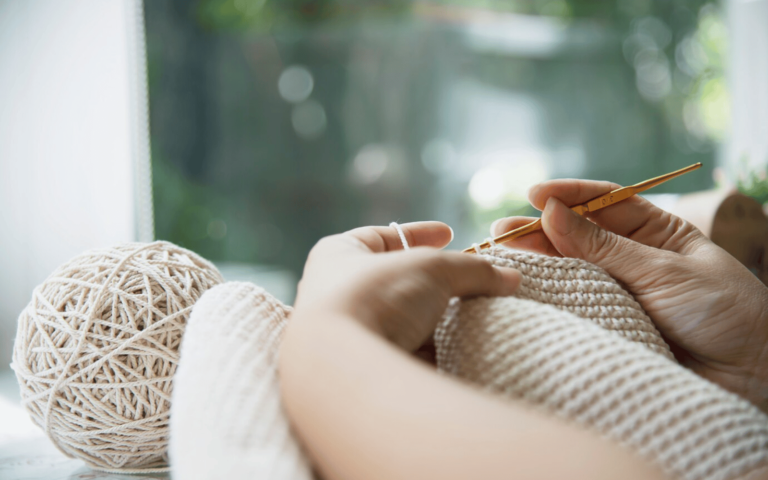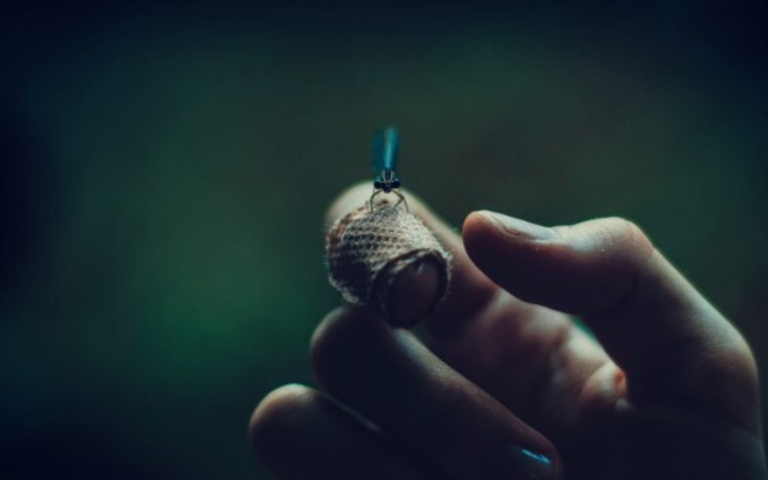Crocheting Lace: Delicate and Feminine Designs to Add a Touch of Elegance
Crocheting lace is a craft with a rich history and timeless elegance. Its origins can be traced back centuries, with early lace crochet patterns appearing in the 19th century. This intricate art form has been cherished for its delicate, feminine designs that add an unmatched touch of elegance to a wide range of creative projects. Throughout its history, crocheting lace has been a symbol of luxury and sophistication, often used to create decorative pieces that exude opulence. As the craft evolved, it went through various phases, each marked by changes in technique, materials, and styles. From its early beginnings with basic lace patterns, crocheting lace has advanced to encompass an array of intricate and ornate designs. The appeal of crocheting lace transcends generations, attracting both seasoned artisans and newcomers who wish to analyze its beauty and intricacies. The enduring significance of crocheting lace in the world of fashion and design cannot be overstated. It has the unique ability to transform everyday items into works of art, making it an essential skill for those who wish to add a touch of timeless beauty to their creations. From vintage-inspired lace shawls to contemporary lace-embellished clothing, the craft remains an art form that beautifully bridges the past and the present.
Understanding the Art of Crocheting Lace
To learn the art of crocheting lace, one must become familiar with a range of tools and materials. The crochet hook, the primary instrument used, is available in various sizes and materials, each impacting the final look and feel of the lace. Smaller hooks often create finer and more delicate patterns, while larger hooks yield more open and relaxed designs. The choice of yarn is equally important, as it influences the overall texture and appearance of the lacework. Fine threads and lightweight yarns are commonly used for lace projects, allowing for delicate, airy, and lightweight creations. The variety of yarn colors and fiber compositions further enhances the versatility of crocheting lace, offering crafters endless options for creative expression. Different crochet stitches and techniques are fundamental to creating lace. While the basics of crochet, such as the chain stitch and single crochet, are essential, it’s the combination of these stitches and the use of intricate techniques that transform plain yarn into exquisite lace patterns. Aspiring lace crocheters must familiarize themselves with stitches like the picot, treble crochet, and double treble crochet, as these are the building blocks for crafting delicate and intricate designs.
Examining Delicate Crocheting Lace Patterns
For beginners, starting with simple lace patterns is the key to building a strong foundation in lace crocheting. Basic lace stitches like the chain, single crochet, and double crochet serve as the starting point. These patterns involve repeating sequences of stitches and are relatively easy to grasp, making them the perfect Opening to the world of lacework. Intermediate-level lace patterns are where crocheters begin to unlock the potential for more intricate and diverse designs. Patterns at this stage incorporate a combination of basic and intermediate stitches, such as the half-double crochet and the double treble crochet. This complexity challenges enthusiasts to expand their skills and focus on precision and pattern comprehension. Advanced lace crocheting delves into complex patterns that demand both skill and patience. These patterns feature intricate motifs, intricate details, and a combination of advanced stitches, like the treble crochet cluster and the linked double crochet. To tackle these advanced projects successfully, crocheters must have a deep understanding of stitch anatomy, tension control, and pattern reading. Adding beads and embellishments to lace crocheting projects can elevate the elegance and sophistication of the final piece. Beading techniques involve threading small beads onto the yarn and incorporating them into the lace design. This additional level of detail allows for customization and a unique, personalized touch in lacework.
Designing Feminine Garments with Crocheting Lace
Lace is a versatile medium for crafting feminine garments that exude elegance and grace. Lace shawls, scarves, and wraps are perennial favorites, known for their ability to transform an ordinary outfit into an extraordinary one. The delicate and intricate lace patterns create a sense of refinement and sophistication, making these accessories timeless and versatile. Fashionable lace tops, blouses, and dresses are perfect examples of how crocheting lace can be integrated into modern wardrobe choices. These garments combine the classic charm of lace with contemporary silhouettes and styles, making them ideal for casual, formal, or special occasions. Crocheted lace clothing not only showcases femininity but also reflects the individuality of the wearer, as each piece can be tailored to their unique preferences. Lace accessories, such as hats, gloves, and headbands, offer a touch of sophistication and a hint of vintage charm to any ensemble. These accessories can be designed to match or complement other lace garments, creating a cohesive and stylish look. The beauty of crocheting lace is that it allows for endless customization, enabling crafters to adapt lace patterns to different garment Sorts.
Tips and Techniques for Perfecting Crocheting Lace
Consistency in tension is a aspect of achieving success in lace crocheting. Maintaining uniform tension throughout a project ensures that the stitches are even and the lace patterns are well-defined. This attention to detail is particularly important when working with intricate lace designs, as even minor deviations in tension can significantly affect the final appearance. Blocking is an essential step in the completion of a lace project. After the crocheting is complete, dampening the piece and pinning it into the desired shape allows the stitches to relax and settle into place. This process not only enhances the lace’s overall look but also ensures that the final piece meets the intended dimensions and pattern. Understanding chart symbols used in lace crochet patterns is a skill that enhances a crocheter’s ability to tackle complex designs. Charts are visual representations of each stitch and pattern used in a lace project, providing a clear and concise guide to pattern execution. The understanding of these symbols simplifies pattern interpretation and promotes accuracy in stitch placement. Troubleshooting common issues in crocheting lace is part of the learning curve for lace enthusiasts. Mistakes, like missed stitches, miscounts, or unraveling, can occur even for experienced crocheters. Knowing how to identify and correct these issues is for maintaining the integrity of the project and preserving its overall aesthetic.
Showcasing Elegance: Incorporating Crocheting Lace in Home Décor
Lace doilies and table runners are classic elements of home décor that have stood the test of time. Their delicate and intricate designs add a touch of old-world charm and grace to any space. Passed down through generations, lace doilies often hold sentimental value, becoming cherished heirlooms that evoke memories of past times. Pillow covers and throws featuring lace-inspired designs transform ordinary home furnishings into exceptional pieces of decor. The intricate lace patterns, typically worked with fine threads or lightweight yarns, introduce an element of refinement and luxury, enhancing the ambiance of any room. These pieces serve not only as functional items but also as elegant accents that elevate the aesthetic appeal of the living space. Incorporating lace into curtain designs is an effective way to add an ethereal and airy feel to a room. Lace curtains allow diffused natural light to create beautiful, delicate patterns on the walls and floors, infusing the space with a sense of romance and sophistication. Lace curtains are an enduring choice, as they are as relevant in contemporary homes as they are in vintage or period-style interiors. Creating delicate lace accents for various home accessories, such as lampshades, coasters, or baskets, is a unique way to add a touch of sophistication to everyday items. These small decorative pieces not only serve a practical function but also contribute to the overall aesthetic of the home, infusing it with a sense of elegance and refinement.
Celebrating Tradition and Modernity in Crocheting Lace
The resurgence of crocheting lace in contemporary fashion is a testament to the adaptability and timelessness of the craft. Designers and enthusiasts are rediscovering and reinterpreting classic lace patterns, integrating them into modern designs and silhouettes. This fusion of tradition and modernity creates a unique synergy that caters to evolving fashion trends while honoring the heritage of lace crocheting. The fusion of traditional lace techniques with modern designs provides a platform for creative innovation. It allows artisans to pay homage to the heritage and artistry of lace crocheting while infusing their designs with a contemporary twist. By blending old and new techniques, designers create fresh and unique pieces that resonate with today’s audience. Drawing inspiration from cultural and historical lace crochet styles provides a diverse array of design influences. Looking into various traditional lace patterns from different cultures enables designers to create a fusion of styles, resulting in a rich tapestry of diverse designs. This multicultural approach celebrates the heritage and craftsmanship of various regions, reflecting a global appreciation for the art of lace crocheting. The innovation and creativity in the world of crocheting lace continue to thrive, driven by designers who looked into unconventional materials, techniques, and applications. Experimentation with new materials, such as unconventional yarns or innovative embellishments, pushes the boundaries of what can be achieved with crocheting lace. This forward-thinking approach paves the way for fresh interpretations and applications, keeping the craft vibrant and relevant.
Embracing the Art: Crocheting Lace as a Therapeutic Hobby
Crocheting lace goes beyond being a creative pursuit; it is also a therapeutic hobby. The focus and concentration required while working on lace crocheting projects offer a meditative experience, promoting relaxation and relief. Engaging in the rhythmic and repetitive motion of crocheting induces a calming effect on the mind, fostering a state of mindfulness. Participation in crocheting groups and communities is a source of camaraderie and social connection for individuals sharing a common passion. These groups provide an avenue for crafters to exchange ideas, techniques, and experiences, enriching their skills and fostering a sense of belonging within a community that appreciates the art of lace crocheting. Crocheting lace not only serves as a creative outlet but also encourages personal growth and self-expression. Crafting unique pieces provides a sense of accomplishment and boosts self-esteem. Through various lace patterns and designs, individuals can express their creativity, leading to personal development and a sense of fulfillment. Sharing and teaching the art of crocheting lace is instrumental in preserving the craft for future generations. Passing down knowledge and skills ensures the continuity of this time-honored tradition. It serves as a means of maintaining a cultural legacy and contributes to the perpetuation of an art form that transcends time.
Showcasing Crocheting Lace: Inspirational Success Stories
Profiles of influential crochet designers and artists provide a glimpse into their creative journeys and the impact they’ve made in the world of lace crocheting. These stories serve as an inspiration for both aspiring and seasoned crocheters, offering insights into dedication, innovation, and the endless possibilities within this art form. Success stories of crocheters who have excelled in lace designs stand as testaments to the endless opportunities within the craft. These individuals showcase how dedication, creativity, and skill can lead to remarkable achievements. Their accomplishments serve as a beacon of inspiration for those seeking to push the boundaries of what can be achieved in crocheting lace. Highlighting impactful and innovative lace crochet projects sheds light on the diverse applications and interpretations of the craft. These projects challenge traditional notions and showcase the ever-evolving nature of crocheting lace. They inspire creative thinking and push the boundaries of conventional design, offering new perspectives and applications within the craft. Celebrating the diversity of lace crochet artists acknowledges the multifaceted approach and perspectives within the community. Each artist brings a unique style and artistic interpretation to lace crocheting, contributing to the rich tapestry of creativity. The diversity within the community reflects a spectrum of techniques, designs, and cultural influences that enrich the art of lace crocheting.
World of Fashion and Home Decoration
In the ever-evolving world of fashion and home decoration, crocheting lace holds a unique position as both a traditional craft and a contemporary style statement. This intricate art form, which transforms thread into elaborate patterns and designs, has traversed centuries, adapting to the changing tastes and trends of societies around the globe. Crocheting lace, with its delicate and intricate designs, offers a versatile and timeless elegance that seamlessly blends with various stylistic preferences, from the vintage charm of antique furnishings to the sleek lines of modern fashion. It is this adaptability that has ensured its survival and continued relevance in today’s aesthetic landscape.
As we delve into the complexities and nuances of crocheting lace, it becomes apparent that this craft is more than just a method of creating beautiful objects; it is a language of creativity that speaks volumes about the cultural and historical contexts from which it emerges. Each stitch, each pattern carries with it stories of times past, of artisans dedicating hours of meticulous work to achieve perfection. The evolution of lace-making techniques, from the simple chain stitches of the past to the complex motifs and patterns of today, mirrors the evolution of artistic expression and craftsmanship through the ages.
Crocheting lace requires a blend of skill, patience, and creativity. The process of selecting the right thread, choosing the appropriate hook size, and mastering the tension to create uniform stitches, forms the foundation of any lace project. Beyond these technical skills, the real magic lies in the ability to envision and execute designs that are both beautiful and functional. Whether it’s a delicate lace doily that adds a touch of sophistication to a living room, a chic lace scarf that complements an evening dress, or a lace overlay that transforms a simple garment into a statement piece, the applications of crocheting lace are as diverse as they are exquisite.
Moreover, the environmental and ethical implications of crocheting lace in the modern world cannot be overlooked. In an era increasingly dominated by fast fashion and mass production, crocheting offers a sustainable alternative that encourages the use of eco-friendly materials and supports slow fashion principles. It promotes mindfulness and a return to a more conscious, hands-on approach to creation and consumption. By choosing to crochet, individuals not only engage in a peaceful and productive craft but also make a statement about their values and commitment to preserving the environment and supporting ethical fashion practices.
The educational aspect of crocheting lace also presents significant opportunities for cultural exchange and community building. Workshops, online tutorials, and crafting circles serve as platforms for sharing knowledge, techniques, and experiences, bridging generational and geographical gaps. These gatherings not only foster a sense of community among crafters but also contribute to the preservation and dissemination of this art form. They provide a space for beginners to learn and for experienced artisans to showcase their work, ensuring that the tradition of crocheting lace is passed down through generations.
Crocheting lace embodies a rich tapestry of history, artistry, and community. Its delicate and feminine designs serve as a testament to the skill and creativity of the artisans who craft them. As a versatile and elegant addition to both fashion and home décor, crocheting lace continues to captivate and inspire. Its role in promoting sustainability, ethical practices, and cultural exchange further underscores its relevance and importance in today’s world. As we look to the future, it is clear that crocheting lace will continue to evolve, finding new expressions and applications that reflect the changing times while holding fast to the timeless beauty and craftsmanship that define it.
Outcome
Crocheting lace is an art form deeply entrenched in history, cherished for its delicacy, elegance, and timeless appeal. The craft’s evolution from traditional origins to its adaptation to contemporary design trends showcases its enduring significance in the creative sphere. Crocheting lace continues to captivate enthusiasts, offering a touch of sophistication and grace to a wide array of projects. Reflecting on the intricate charm and feminine allure of lace designs encourages further analysis and innovation in the realm of lace crocheting. The combination of tradition and modernity, coupled with therapeutic benefits and inspirational success stories, emphasizes the profound impact of this art form on individuals and the community at large. Embracing the art of crocheting lace invites individuals, whether novices or seasoned crafters, to immerse themselves in this exquisite craft. It serves as an avenue for creativity, innovation, and appreciation of the elegance and beauty that lace crocheting brings to the world, ensuring its continued relevance and evolution across generations.


